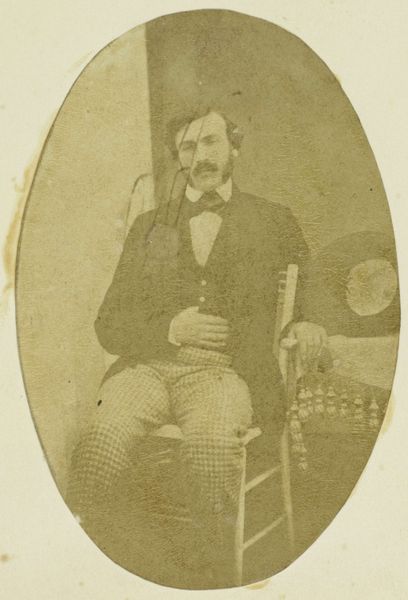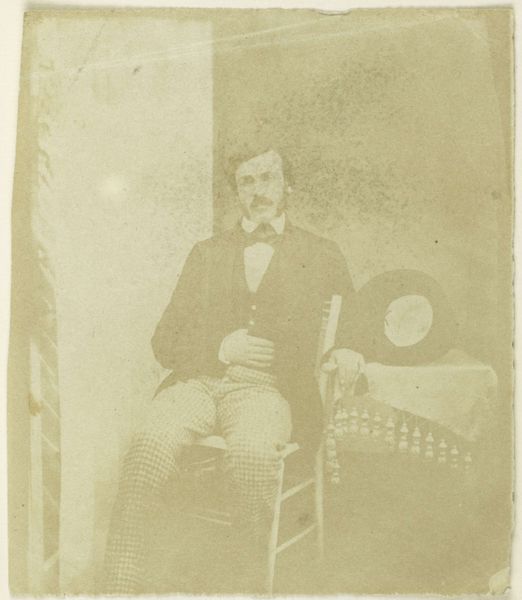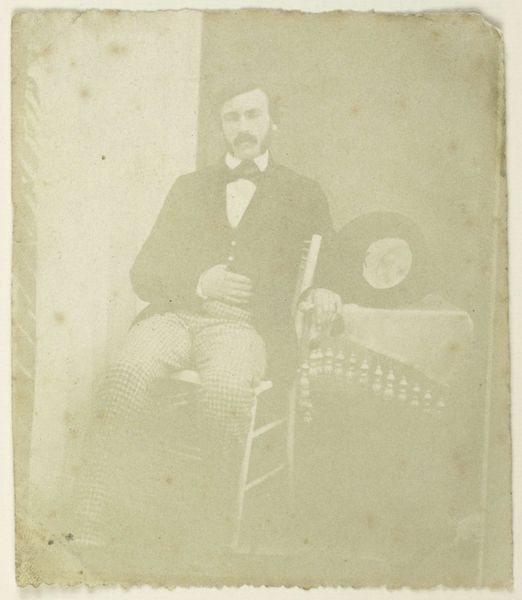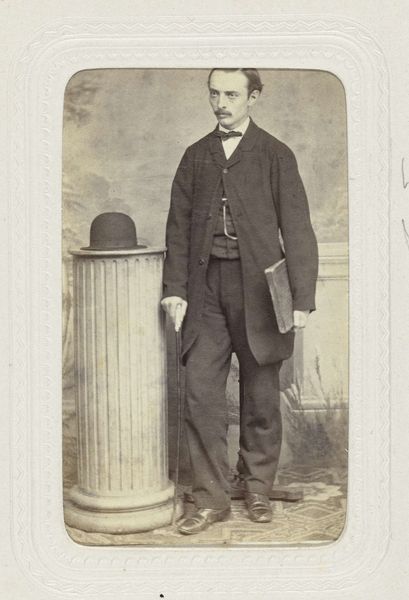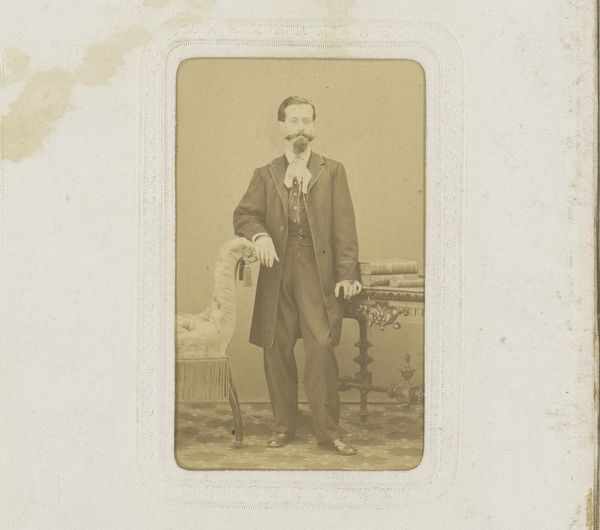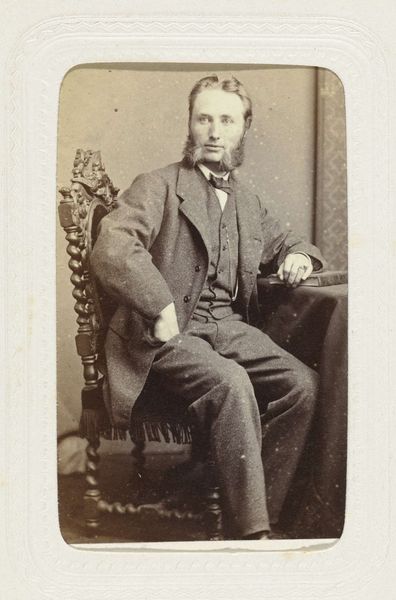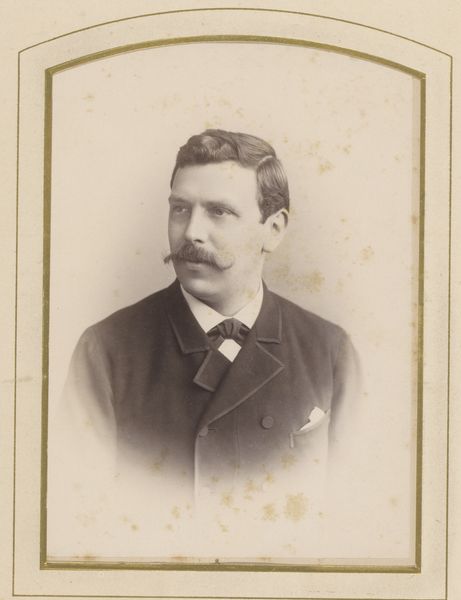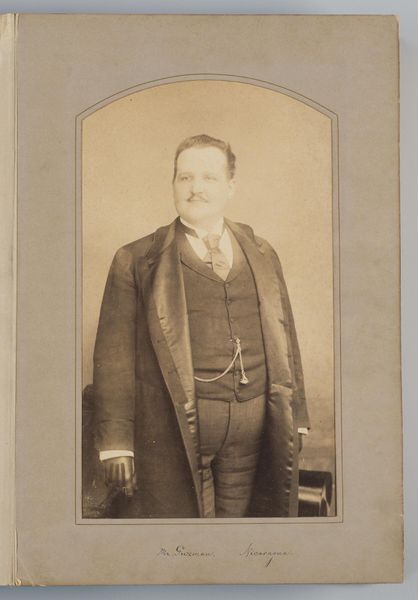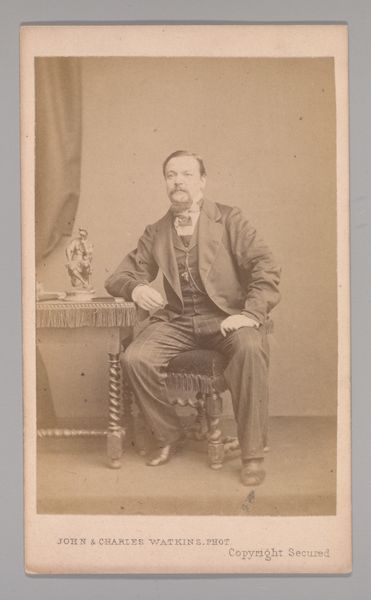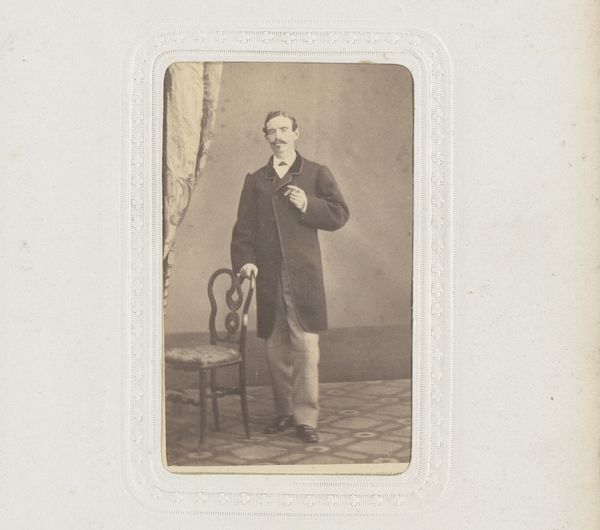
photography, albumen-print
#
portrait
#
charcoal drawing
#
photography
#
charcoal
#
graphite
#
albumen-print
#
realism
Dimensions: height 101 mm, width 72 mm
Copyright: Rijks Museum: Open Domain
Editor: Here we have Eduard Isaac Asser's "Portret van een jongeman," dating back to around 1854. It’s an albumen print, giving it a warm, sepia tone. The oval format and the subject's rather stiff pose give the photograph a distinctive, old-fashioned feel. What draws your attention when you look at this portrait? Curator: The immediate interest lies in the interplay of textures. Observe the smooth, almost porcelain-like quality of the face contrasted with the tactile roughness of the man’s patterned trousers. This creates a tension, doesn't it? Further, the photographer has captured an almost geometric interplay in the composition. Note how the sharp lines of the chair interrupt the soft curves of the oval frame. What effect does that have, in your view? Editor: It sort of makes you aware of the artifice involved, that this is a constructed image rather than a purely candid shot. So, what do you think the photographer wanted to convey through such a meticulous construction? Curator: Perhaps that is the point. By emphasising the artificial construction of the image, Asser is drawing attention to photography as art, to the composition as a deliberate artistic decision, and not as a simple mechanical reproduction. And do we not see hints of light and dark, chiaroscuro perhaps, in the soft gradations across the background? These effects bring a pictorial quality, further establishing photography as art. Editor: That’s a perspective I hadn't considered. So, it is as much about the medium itself as it is about the subject. It’s fascinating how the seemingly straightforward choice of composition directs us to read the photograph so much more critically. Curator: Indeed, a seemingly straightforward composition reveals a deeper understanding of pictorial conventions. It’s an engagement with the very nature of representation. Editor: Thank you for illuminating that for me! Curator: A pleasure. I appreciate the opportunity to look again through your thoughtful responses.
Comments
No comments
Be the first to comment and join the conversation on the ultimate creative platform.
